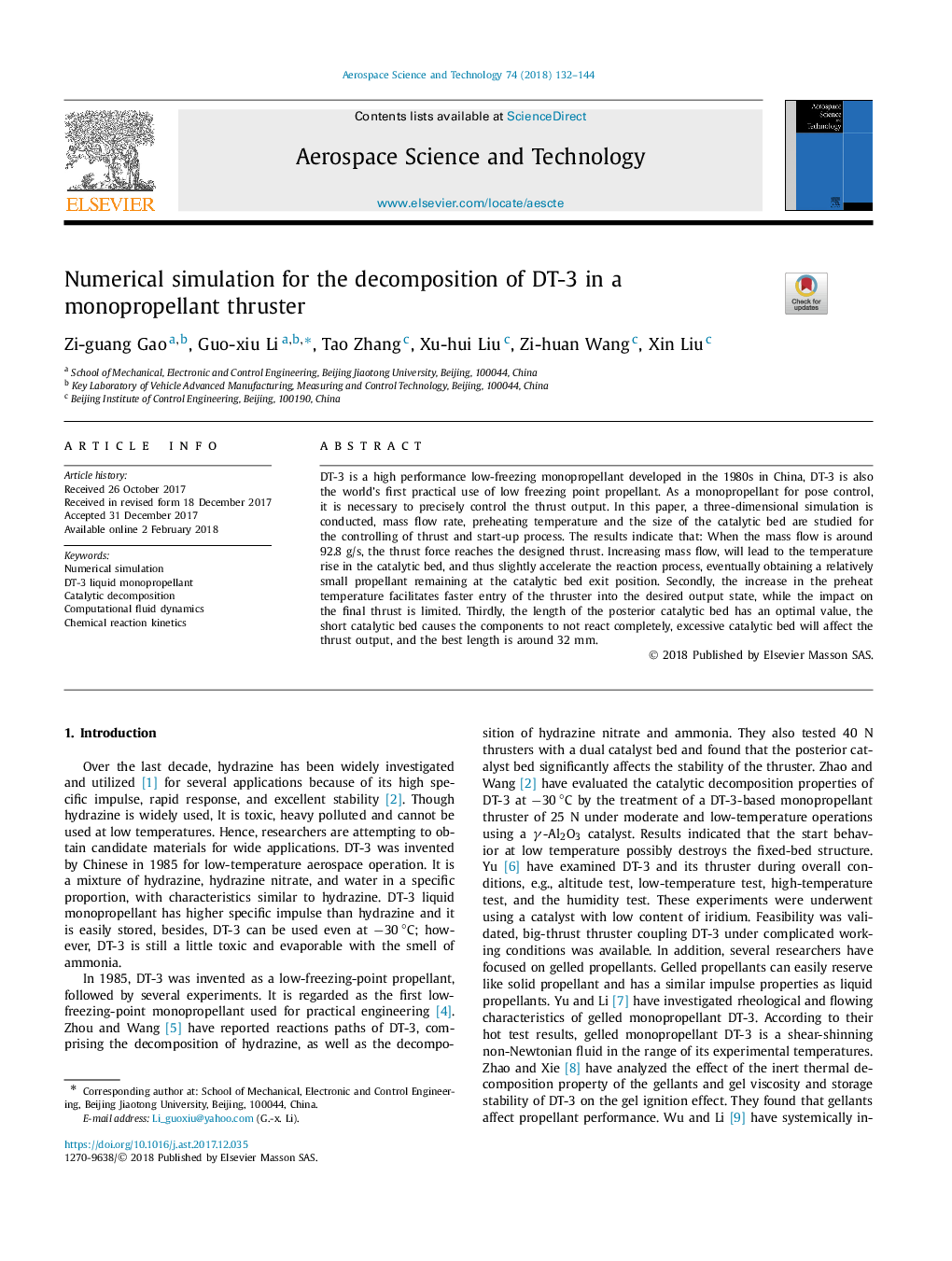| Article ID | Journal | Published Year | Pages | File Type |
|---|---|---|---|---|
| 8058056 | Aerospace Science and Technology | 2018 | 13 Pages |
Abstract
DT-3 is a high performance low-freezing monopropellant developed in the 1980s in China, DT-3 is also the world's first practical use of low freezing point propellant. As a monopropellant for pose control, it is necessary to precisely control the thrust output. In this paper, a three-dimensional simulation is conducted, mass flow rate, preheating temperature and the size of the catalytic bed are studied for the controlling of thrust and start-up process. The results indicate that: When the mass flow is around 92.8 g/s, the thrust force reaches the designed thrust. Increasing mass flow, will lead to the temperature rise in the catalytic bed, and thus slightly accelerate the reaction process, eventually obtaining a relatively small propellant remaining at the catalytic bed exit position. Secondly, the increase in the preheat temperature facilitates faster entry of the thruster into the desired output state, while the impact on the final thrust is limited. Thirdly, the length of the posterior catalytic bed has an optimal value, the short catalytic bed causes the components to not react completely, excessive catalytic bed will affect the thrust output, and the best length is around 32 mm.
Keywords
Related Topics
Physical Sciences and Engineering
Engineering
Aerospace Engineering
Authors
Zi-guang Gao, Guo-xiu Li, Tao Zhang, Xu-hui Liu, Zi-huan Wang, Xin Liu,
